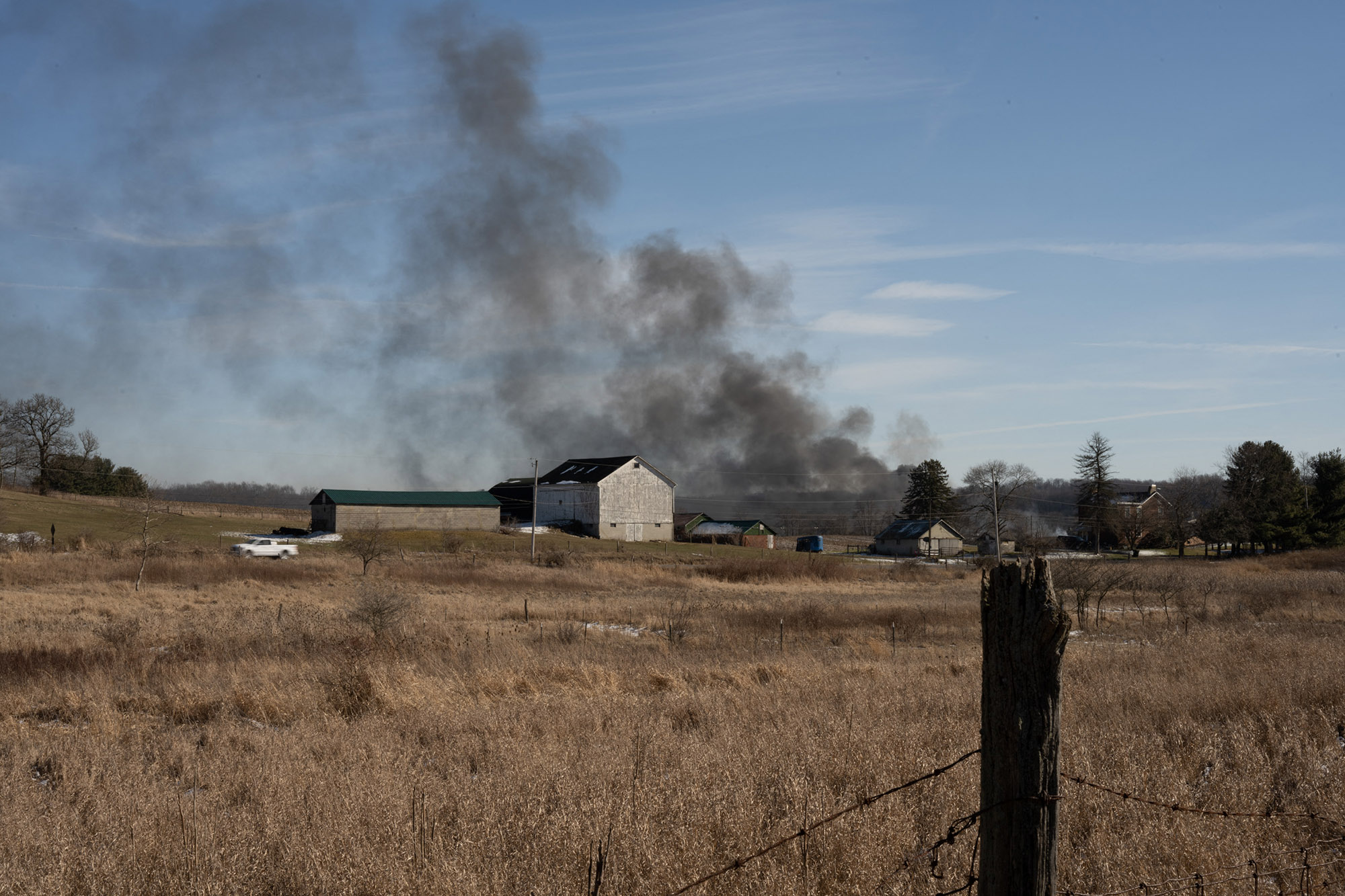Investigation Into Persistent Toxic Chemicals From Ohio Train Derailment In Local Structures

Table of Contents
Types of Persistent Toxic Chemicals Released and Their Properties
The derailment released a cocktail of hazardous substances, including vinyl chloride, butyl acrylate, and others. These aren't simply pollutants; they are persistent toxic chemicals, meaning they don't readily break down in the environment, posing a long-term threat. Their persistence stems from properties like bioaccumulation (building up in living organisms) and a long half-life (the time it takes for half the substance to degrade).
- Vinyl chloride: Known for its carcinogenicity, vinyl chloride persists in soil and water, leading to potential groundwater contamination and long-term exposure risks. Studies have shown its ability to linger for years, impacting both environmental and human health.
- Butyl acrylate: A respiratory irritant, butyl acrylate also poses potential long-term health effects, including developmental toxicity. Exposure can lead to various health problems, emphasizing the urgency of assessing its presence in local structures.
- Other chemicals: The exact composition of the released chemicals continues to be investigated, but other persistent organic pollutants (POPs) are suspected, each with its own unique set of harmful properties. Further research is critical to fully understand the extent of the contamination.
[Link to relevant scientific studies/reports on chemical persistence]
Pathways of Chemical Migration into Local Structures
The released chemicals spread from the derailment site via various pathways, infiltrating local structures and potentially exposing residents to long-term risks. Understanding these pathways is crucial for effective remediation strategies.
- Airborne dispersion and deposition: The initial explosion and subsequent burning released plumes of toxic chemicals into the air, which were then deposited on surfaces, including building exteriors and interiors.
- Groundwater contamination and leaching into foundations: Chemicals seeped into the soil, contaminating groundwater. This contaminated water can then leach into building foundations, leading to indoor contamination.
- Soil contamination and uptake by building materials: Soil near the derailment site is heavily contaminated, and this contamination can be absorbed by building materials, such as wood and concrete, leading to the slow release of chemicals into indoor environments.
- Direct contact during cleanup efforts: Individuals involved in the initial cleanup efforts may have inadvertently tracked contaminated soil and debris into their homes and other structures.
Methods for Detecting and Measuring Persistent Toxic Chemicals in Structures
Identifying and quantifying the presence of persistent toxic chemicals within affected structures requires advanced testing methodologies. Several techniques can be employed to comprehensively assess the extent of contamination.
- Air quality monitoring using high-volume samplers: High-volume air samplers can collect sufficient air samples for detailed chemical analysis, pinpointing specific contaminants and their concentrations.
- Water testing for dissolved and adsorbed chemicals: Water samples from wells and municipal supplies need to be analyzed for dissolved and adsorbed chemicals, identifying any contamination present.
- Soil sampling and laboratory analysis using GC-MS or HPLC: Soil samples are collected from around affected structures and analyzed using sophisticated techniques like gas chromatography-mass spectrometry (GC-MS) or high-performance liquid chromatography (HPLC) to identify and quantify specific chemicals.
- Material analysis of building components: Testing building materials directly helps determine if they have absorbed significant quantities of these chemicals, indicating potential for long-term indoor exposure.
Health Impacts of Exposure to Persistent Toxic Chemicals
Exposure to the released chemicals poses significant short-term and long-term health risks to residents, with vulnerable populations like children and the elderly being particularly at risk.
- Respiratory problems (asthma, bronchitis): Many of the released chemicals are respiratory irritants, leading to increased rates of asthma and bronchitis.
- Neurological effects (headaches, dizziness): Exposure can cause a range of neurological symptoms, including headaches, dizziness, and cognitive impairment.
- Cancer risks (long-term exposure): Several of the chemicals are known or suspected carcinogens, raising concerns about increased cancer risks with long-term exposure.
- Reproductive health issues: Some of these chemicals have been linked to reproductive health problems, impacting both fertility and fetal development.
[Links to relevant studies on health impacts of specific chemicals]
Remediation Strategies for Contaminated Structures
Addressing the contamination requires comprehensive remediation strategies, which can vary in complexity and cost depending on the level of contamination.
- Air filtration systems (HEPA filters): High-efficiency particulate air (HEPA) filters can remove airborne contaminants, improving indoor air quality.
- Soil excavation and replacement: In severely contaminated areas, soil excavation and replacement may be necessary.
- Building decontamination techniques: Specialized cleaning and decontamination techniques might be required to remove chemicals from building surfaces and materials.
- Long-term monitoring of remediation effectiveness: Ongoing monitoring is crucial to ensure the effectiveness of remediation efforts and to detect any potential resurgence of contamination.
Conclusion: Addressing the Persistent Toxic Chemicals from Ohio Train Derailment in Local Structures
The Ohio train derailment has highlighted the devastating and long-lasting impact of persistent toxic chemicals on communities. The potential for long-term health consequences necessitates continued investigation into the extent of contamination within local structures. Effective remediation strategies are critical to protect public health, but the challenge is significant. We must demand accountability from responsible parties and actively participate in community efforts to ensure thorough investigation and remediation of the persistent toxic chemical contamination. Staying informed, demanding transparency, and advocating for comprehensive solutions are essential steps in mitigating the long-term effects of this environmental disaster. Let's work together to address the lingering threat of these persistent toxic chemicals and secure a safer future for affected communities.

Featured Posts
-
 Msharkt Ebd Alqadr La Tmne Khsart Qtr Amam Alkhwr
May 23, 2025
Msharkt Ebd Alqadr La Tmne Khsart Qtr Amam Alkhwr
May 23, 2025 -
 Nyt Mini Crossword Clue And Answer Help April 18 2025
May 23, 2025
Nyt Mini Crossword Clue And Answer Help April 18 2025
May 23, 2025 -
 This Morning Host Cat Deeleys On Air Wardrobe Issue
May 23, 2025
This Morning Host Cat Deeleys On Air Wardrobe Issue
May 23, 2025 -
 Jonathan Groff Tony Award Nomination For Just In Time
May 23, 2025
Jonathan Groff Tony Award Nomination For Just In Time
May 23, 2025 -
 Facing Trumps Threats Canadian Automotive Executives Call To Action
May 23, 2025
Facing Trumps Threats Canadian Automotive Executives Call To Action
May 23, 2025
